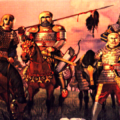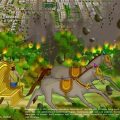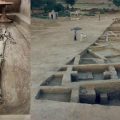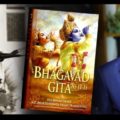Theory of Mahabharata Consciousness: Reconciling Traditional with Analytical Reading
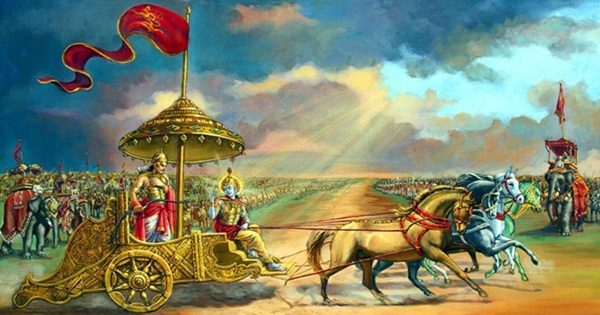
Few scholars studying the Mahabharata argue that the ancient text doesn’t contain any later addition and that all of Mahabharata is authored by Vyasa soon after the Kurukshetra war. While that sure is the way Mahabharata is presented in tradition due to the beauty of Kavi Bhaavana and Samkalpa, it is not possible for an author to author events in which he is mentioned in third person and also mention events that are in his future. At least that was not the ancient narrative style though such attempts were made by modern writers. Ancient narratives were dialogue based and the two people conversing had to be alive and contemporary for the dialog to occur and then for others to note it down and render it as a literary work. Hence there are later growths into Mahabharata.
Sure questions were asked about the Vyasa-Mahabharata single authorship problem in the past by intelligent students. To quell those questions, it is added into the tradition that Vyasa is immortal and can see the future. But such an answer creates more questions and also has the risk of getting all of Mahabharata dismissed as a pure work of fiction. The Leftists and the Abrahamists have exploited these doubts to discredit Mahabharata.
Not any more. Here is how this puzzle resolves itself satisfying both tradition and the critical analytical view.
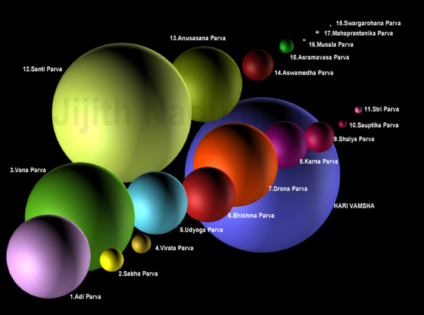
Figure 1:- The Mahabharata Consciousness Cloud with the relative size of its 18 Parvas and Harivamsha, the appendix; Image created by Jijith Nadumuri Ravi
Mahabharata has to be seen as an ever growing tree of Mahabharata consciousness and Vyasa as the nucleus of that consciousness. It then expands through numerous authors, re-tellers, alternative narrative creators, all expanding on it. Even though separated in space by many Yojanas and in time by many centuries, they author new verses crediting Vyasa for their additions. This is like the expansion of a shared document or a Wikipedia article. An original author with more knowledge starts it, which is expanded by later authors. But in the case of Mahabharata, the later authors credited the original author Vyasa and left no signature of their own. The end result is a network of information, a collection of ancient voices preserved in the form of a Consciousness Continuum that spans through space and time, ignoring all the space-time boundaries. This Consciousness Continuum contains the snippets of information caught in the various pockets of the space-time continuum.
Vyasa’s work named ‘Jaya’, focused only on the Kurukshetra war narrative. It described the battle of the Kauravas under the generals viz. Bhishma, Drona, Karna, Shalya and Ashvatthama. It was the original nucleus. It is known that Vyasa compiled the work called Jaya by assembling the narratives of bards present in the army of each Kaurava general. The bards were under the leadership of the chief bard or Suta, viz Sanjaya who narrates it to Dhritarashtra in the form of daily war-reporting or daily briefing of the battles to the king. Vyasa compiled these daily reports and news briefs in the form of Jaya. He did it soon after the Kurukshetra War (based on the information inside Mahabharata itself).
It expanded into a work called ‘Bharata’ due to the additions from Vaisampayana, Vyasa’s disciple. He added the life history of Vyasa as well as that of the Kuru-Pandavas and their royal lineage containing the life history of the ancient ancestral kings like Bharata into it. Vaisampayana narrates the work named Bharata to Janamejaya, Arjuna’s great grandson (Arjuna – Abhimanyu – Parikshit – Janamejaya). So Jaya expanded into Bharata in a minimum two human generations.
Vaisampayana’s Bharata expanded to Mahabharata through the additions of Ugrasrava Sauti who lived many decades after the lifetime of Vaisampayana. He added the history of Vaisampayana, Janamejaya and his two descendants (Janamejaya – Shatanika – Aswamedhadatta) into the narrative. Thus the work named Mahabharata as narrated by Sauti expanded from Vaisampayana’s Bharata in at least two human generations later to Janamejaya and Vaisampayana.
It is not clear exactly what are the narratives that are added by Sauti. But in general, more narratives unrelated to the Bharata lineage like that of Nala-Damayanti, Satyavan-Savitri etc might have got added to it by Sauti based on some context and questions asked by Shanuaka who was listening to the narrative of Sauti.
More clearly, by looking at the original verses and finding who among the three is the narrator (Sanjaya, Vaisampayana or Sauti) we can find out if a verse belongs to the Jaya phase, the Bharata phase or the Mahabharata phase. But Sauti can always add his own narrative and make it look like that of Vaisampayana and Vaisampayana can always add his own narrative and make it look like those narrated by Sanjaya. So the exact distinction between Jaya, Bharata and Mahabharata is slightly blurred. Usually later additions appear at the beginning and end of every Adhyaya.
Vana Parva, Shanti Parva and Anushasana Parva are swollen with more adhyayas. These show the signs of continuous growth with numerous topics on Dharma, Artha, Kaama, Rajneeti and so on. We also have three abridged versions of Ramayana in Vana Parva one (smallest, few verses long) narrated by Lomasha to Yudhisthira, another (smaller, a chapter long) narrated by Hanuman to Bhima and then another (biggest, 18 chapters long ) by Markandeya to Yudhisthira!
Today, we get to read Mahabharata where Sauti too is a third person. So someone who lived many decades or generations after the lifetime of Sauti is narrating it to us. He added the life of Sauti too into Mahabharata. After him, several people might have contributed to it for centuries. It resulted in multiple versions of Mahabharata.
There is the BORI critical edition created by Suktankar and team. They worked tirelessly for 40 years after studying all the available 160 or more versions of Mahabharata grouped primarily into southern edition, eastern edition (like Bengal version), western edition (like Bombay edition) and northern edition and then defined an oldest possible version of Mahabharata containing verses present in all these versions. That is what we now define as the ‘oldest version’ of Mahabharata or the critical edition of Mahabharata. Any verse not found in the critical edition is a much later version when Mahabharata diversified into regional versions so that there is no full quorum agreement on those verses among all the regional variants.
These regional versions of Mahabharata are also part of the Mahabharata consciousness tree. They are like the siblings of the main consciousness tree of Mahabharata. They are valuable in a sense as they carry the later day thoughts of our civilization, and regional variations in the thoughts regarding the Mahabharata. But when the focus of our study is the most ancient information recorded in Mahabharata it is better to follow the critical edition.
The Mahabharata consciousness view creates a bridge between the traditional view and the scientific analytical view. Vyasa as the single author of Mahabharata as a whole is replaced by a single-author Vyasa-consciousness, that spans many centuries and regions (encompassing the minds of each individual contributor – Vyasa, Vaisampayana, Sauti, unknown later narrators some of them Shaiva, Vaishnava sages, other sutas, storytellers and so on).
Consciousness studies shows that several minds can be connected by a single thought or single idea, even though separated by many generations and separated by huge distances, because consciousness is not confined by space or time. Thus in the consciousness continuum, Mahabharata is authored by a single Vyasa consciousness apparently interpreted as a single super-human author Vyasa, who apparently appears to be Chiram-jeevi (immortal).
Thus, both tradition and the scientific analysts are right if we consider this consciousness model of Mahabharata.
What is the consequence of not recognizing later additions in our ancient texts?
Here is an example of what will happen if we don’t recognize later additions in the ancient texts and treat them as monolithic texts authored by a single person like a single Vyasa :- See this recent twitter debate shown below. It caught my attention due to an important point I am trying to bring into the attention of our Dharmic side.
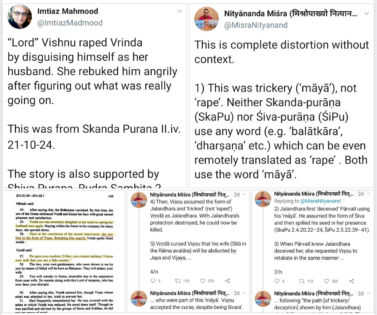
Figure 2: A Twitter Battle about a narrative in the Skanda Purana
All kinds of things are added into Puranas as later additions. Narratives like that of Jalandhara and the test or violation of chastity by Brahma, Vishnu, Shiva are seen in the Puranas (like Atri-Anasuya narrative and birth of Datta, Dattatreya and Durvasa).
Some of it, like Brahma’s relationship with Sarasvati, the narrative of Brihaspati-Tara-Chandra, the narrative of Revati-Balarama etc can be explained as astronomical information encoding. But not all of them. Later redactors have done lot of mischief by inserting verses into Itihasa Puranas first by discrediting the Rgvedic Indra as a womanizer, then they did not spare Vishnu, Brahma or Shiva, Krishna or Rama in later stages by inventing new narratives like those of Jalandhara. All of them are not necessarily Dharmic. Some of them can have Vidharmic or Adharmic suggestions. These have to be considered as later reflections, viz. the Dharmic consciousness, reflected from a set of contributors who have a Vidharmic or Adharmic mind. Since these ancient Smriti texts are a consciousness-continuum, a collection of the diverse ancient voices, that preserves every information snippet that is caught in the space-time framework, all kinds of information of every hue is preserved in it. A modern reader, who is accessing this consciousness-net needs to evaluate it with the current context to discriminate if it is useful or not in order to accept or reject it. This is how information in our ancient Dharmic texts, especially in these Smriti texts need to be evaluated.
This particular Pauranic narrative that sparked a twitter battle was found in the Skanda Purana, Vishnu Khanda, Kartika Masa Mahatmya sub section, spanning two chapters. Skanda Purana has grown into huge size due to continuous later additions. I have studied it. I have prepared comparative charts of all Puranas, Vedas and Itihasas.
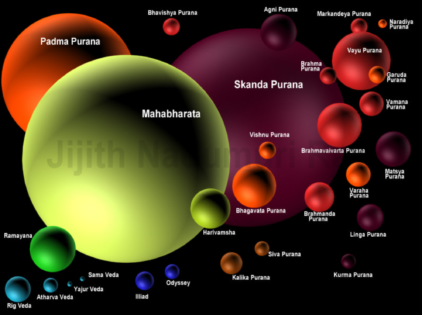
Figure 3: The Consciousness Cloud of the Veda Itihasa Puranas, with their size comparison. Image created by Jijith Nadumuri Ravi
There is layered growth that occurred into Mahabharata and Ramayana too with many absurd and nonsensical justifications arising out of after-thoughts of original events mentioned in earlier narratives found in Veda, Itihasa Puranas. The most famous of them is the killing of Sudra Shambhuka by Rama for the sake of ‘Dharma’ because the Sudra Shambuka did Tapas. As long as we accept these as later additions when the Kali Yuga corruption sets into the Dharmic thought, we have no problem.
But the problem arises when we insist all of it was originally authored by Vyasa or Valmiki. The problem arises when our Dharmic side then starts defending it as divine and unquestionable. The problem starts when they then abuse or devalue the people who study the layered growth and evolution happened in the Itihasas and Puranas, in order to date the information into various layers, belonging to various periods of the textual growth, to analyze its chronology and geography. The problem arise when they insist that it need to be read in only one particular way, viz as philosophy alone, ignoring the geographical, astronomical and chronological data in it, discrediting any study centered around information layering, chronology or geography in the Veda Itihasa Puranas.
I have raised my voice against this before. What you see in this Imtiaz Mohmood’s tweet is the perils of that wrong approach. The later verses added in the Puranas have put words into Vishnu’s mouth and actions into Vishnu’s body, which he has not uttered or performed.
Similarly I pointed about the fault in reading the Mahabharata and Ramayana as a single text authored completely by one person (Vyasa / Valmiki) with focus on only philosophy. I highlighted the value of chronological and geographical studies into Mahabharata, Ramayana and Puranas. I showed the positive aspect of Indology especially done by Indian Indologists like Talageri who studied the chronology and geography of Rigveda and those others studying chronology and geography of Mahabharata. But many were not convinced of that approach and questioned, devalued or ignored all such Indological studies into Veda, Itihasa Puranas. Soon, enough people will realize the fault in the idea of not trying to date the information layers or the events of Mahabharata or Ramayana or Puranas and the notion that we need to treat it as a monolithic un-layered text, authored exactly like we are seeing it today by a single person (Vyasa or Valmiki).
As of today, those studying Veda Itihasa Puranas are divided into two camps. Those who accept that they are evolved in layers and those who believe in their single authorship implying the text to be un-layered and monolithic.
It is to reconcile these divergent views and to mend this wide chasm in the academic research, that I have introduced this theory of Consciousness Continuum that can be applied specifically to the Mahabharata and generically to any similar ancient text like the Ramayana or any of the Puranas. It helps to bridge the gap between the single authorship concept held dear by tradition and the very apparent or self evident information layering and multiple authorship found in the Veda Itihasa Puranas. The philosophical studies constitute one important aspect of all studies but it is not the only study possible. Just like the study of medicine involves the study of chemistry (biochemistry), or physics (biophysics), some researchers can focus on the philosophy of Veda, Itihasa Puranas and others need to study the chronology and the geography of these texts. Denying that is like unto denying chemistry and physics by a biologist. An absurd proposition. Such notions will not last long and will be rectified.
How can we reconcile with the traditional reading of our ancient texts with a historical reading based on scientific analysis?
Like how the milk is churned to generate curd and butter, our Bharatiya tradition turns the physically occurring historical events into Itihasa and Puranas. Itihasa-Puranas are always a derivative of the historical events that occurred in the time axis of our local space-time. As the churning happens in the consciousness of the Itihasa Puranic narrator, as is natural during the churning of milk, the event sequences too undergo a churning so that they are no longer linear or sequential. The narrator brings out the essence of the civilizational lessons, into the forefront and pushes down the sequentiality and the linearity of the historical events to the background. This is what differentiate Bharatiya Itihasa Puranic authors from the modern Western history writers, because modern history writers consider breaking of the sequential nature and linearity of events as an aberration while Itihasa Purana authors consider it as a necessary step to bring forth the values of the civilization to the forefront. They care very less about sequence and linearity.
There is one more process that differentiates Itihasa Purana authoring process from the history writing process.
The essence viz the civilization-morals, values and lessons are embellished or decorated with glowing magical attributions which we call as the magical narratives. This is done purposely to etch the narrative into the minds of the listeners or readers. If these magic in the narrative and the impossible accounts are taken out, the information fades away quickly. Aitihasik or Puranic narratives will then never be remembered for centuries and millennia. In a time when everything needed to be committed by memory, and transmitted by word of mouth, with no possibility of inscribing huge information with details, this would have been a disaster. These magical narratives are the reinforcing structures of the Veda Itihasa Puranic knowledge systems.
When its purpose is clear we can treat them properly in our studies.
This understanding is necessary to study Itihasa Puranas. Without this understanding the Western scholars (and the Indian scholars approaching the study with a western paradigm) as well as the traditional scholars studying it with the traditional paradigm will go astray and arrive at wrong conclusions. Those following western paradigms tend to dismiss the narratives of Itihasa Puranas whenever they see linearity and sequential nature of the events are disrupted or wherever any impossible magical narratives are found. This is blind rejection. Most of the Western scholars and their Indian leftist allies who refuse to see any historical or geographical data in Veda Itihasa Puranas treating them as pure fiction belong to this group.
Those following traditional paradigms tend to accept everything in the Itihasa Puranas including the magical impossibilities as well as the non linearity and non sequentiality of events. The researchers among them go ahead further treating them as history (this last part in reaction to the criticism from the western paradigms). This is blind acceptance. Tradition based researchers who try to date Rama 8 lakh years ago basing their calculations on a magical Yuga of 4320000 years (not realizing the poetic exaggerations as well as the mathematical need to reconcile the residues in the calendar calculations necessitating the need for bigger Yuga definitions) and those who try to find Meru mountain at the center of a disc shaped earth supported by the eight elephants etc falls in this group. They often cannot differentiate the magical narratives from the factual data.
Both these approaches are reaching the dead ends because of indiscriminate treatment of Itihasa Purana narratives as history because they are unable to recognize the transformative churning process that turns history into Itihasa Purana narratives.
A third group among the traditionalists are then formulating new rules in reaction to western criticism of traditionalism, to the extent of banning any detailed enquiry into the historical events embedded into Veda Itihasa Puranas. This is self defeating. It is not a healthy approach. It is driven out of a false fear that such studies will lead to the end of the traditional reading of the Veda Itihasa Puranas.
This is similar to Abrahamism’s defense of preventing scientific enquiries into the Abrahamic texts. Though it is true that Abrahamism, with its falsehood and weak facts, will break when it encounters the truth of the science, the same is not true about the Dharmic texts. Because Dharma is not anti science like Abrahamism. Science and Dharma are brothers like Balarama and Krishna born to the same mother Rta. Science, though nurtured in recent centuries in the West, is not tainted by association with the Western idiosyncrasies. Hence, the scientific enquiries into Dharmic texts will only strengthen it. They won’t break Dharma or Dharmic texts.
As a result of this urge to ban, this third group of traditionalists discredit even the highly valuable theories like OIT (Out of India Theory of linguistics), generated based on the historical analysis of Rigveda, the only scholarship that has so far successfully countered the AIT (Aryan Invasion Theory), saying ‘historical reading of Rigveda is not a traditionally approved way of reading it’. In this way, the traditionalists are fighting with their own friends who are defending them from the offensive paradigms like the AIT, established primarily by the western scholars! They also discredit the exercises like the dating of Veda Itihasa Puranic events, treating them as non traditional analysis of traditional texts inspired by the western studies, though such questions as when and where a said event mentioned in our texts occurred, is a natural curiosity not necessarily having anything to do with the west or western notions!
Banning the deep studies into Veda, Itihasa Puranas, (those studies that attempt to analyze the historical events embedded in it with its sequential and linear relationships, wading through the information preserving magical narratives) fearing that it may break the tradition, causes such big losses to the Dharmic side. It is similar to a bunch of doctors preventing the chemists from studying the molecular level structure of the biological systems like the tissues, cells, chromosome etc.
All the Reality exists at different levels of resolution. The doctors study the human body, organs, tissues, cells and cell organs. That is the boundary of the reality of the domain of medicine and of doctors. But there is a subtle reality of chemistry underlying the reality of medicine where all the body, organs, tissues, cells and cell organs like chromosomes resolve into chemical molecules and atoms. Studying these molecules and atoms won’t break the system of medicine or make the doctors irrelevant or jobless. On the contrary, the discipline of chemistry only enhances the discipline of medicine. Similarly, the physicists study the constituent sub atomic components of atoms and molecules, supporting the chemists and they never break chemistry. Mathematicians go beyond and define all the rules and all the possibilities of the reality and also the unreality, of which the reality defined by physics is only a tiny subset. The mathematician, by exploring the unreal or the quasi real possibilities, never breaks the reality or breaks the physics.
Conclusion
In conclusion, a deep dive into the core of Veda Itihasa Puranas, wading through the mesmerizing structures of magical narratives by analyzing the events embedded inside it focusing on its sequential nature and linearity will not break the traditional reading of the Veda Itihasa Puranas, but only strengthen it and defend it against the alien paradigms, like how mathematics support physics, how physics support chemistry and how chemistry supports biology. The Theory of Mahabharata Consciousness applied specifically to the Mahabharata and generically to all our ancient texts will help us to do justice to both tradition and science.
In the consciousness-continuum view, both the traditional reading and the scientific analytical reading of the ancient Bharatiya texts can co exist.
Featured image courtesy: Vedic Feed.
Jijith Nadumuri Ravi
Latest posts by Jijith Nadumuri Ravi (see all)
- 387 ‘Moplah Martyrs’ to be Removed from Freedom Struggle Dictionary - October 23, 2024
- Afghanistan Was Part of Rgvedic Horizon: A Historical Analysis - October 23, 2024
- Why Build a Statue for Rastra Purusha Krishna, the Founder of Delhi? - October 23, 2024

